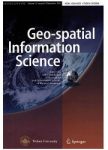Spatiotemporal analysis of vegetation variability and its relationship with climate change in China
有在中国的气候变化的植被可变性和它的关系的空间与时间的分析作者机构:National Engineering Research Centre of Geospatial Information TechnologyKey Laboratory of Spatial Data Mining and Information Sharing of Ministry of EducationFuzhou UniversityFuzhou 350002FujianChina Community and Regional Planning ProgramUniversity of Nebraska-LincolnLincolnNEUSA
出 版 物:《Geo-Spatial Information Science》 (地球空间信息科学学报(英文))
年 卷 期:2014年第17卷第3期
页 面:170-180页
核心收录:
学科分类:0710[理学-生物学] 071001[理学-植物学] 07[理学]
基 金:The authors gratefully acknowledge the financial support received for this work from the National Natural Science Foundation of China(grant number 41071267) the Scientific Research Foundation for Returned Scholars,Ministry of Education of China(grant number940) the Science Foundation of Fujian Province(grant numbers 2012I0005 and 2012J01167)
主 题:vegetation variability wavelet transform climate change non-stationary normalized difference vegetation index(NDVI)
摘 要:This paper investigated spatiotemporal dynamic pattern of vegetation,climate factor,and their complex relationships from seasonal to inter-annual scale in China during the period 1982–1998 through wavelet transform method based on GIMMS ***,most vegetation canopies demonstrated obvious seasonality,increasing with latitudinal ***,obvious dynamic trends were observed in both vegetation and climate change,especially the positive *** 70%areas were observed with obvious vegetation greening up,with vegetation degradation principally in the Pearl River Delta,Yangtze River Delta,and *** warming trend was observed across the whole country(98%area),stronger in Northern *** over half of area(58.2%)obtained increasing rainfall trend,around a quarter of area(24.5%),especially the Central China and most northern portion of China,exhibited significantly negative rainfall ***,significantly positive normalized difference vegetation index(NDVI)–climate relationship was generally observed on the de-noised time series in most vegetated regions,corresponding to their synchronous stronger seasonal ***,at inter-annual level,the NDVI–climate relationship differed with climatic regions and their long-term trends:in humid regions,positive coefficients were observed except in regions with vegetation degradation;in arid,semiarid,and semihumid regions,positive relationships would be examined on the condition that increasing rainfall could compensate the increasing water requirement along with increasing *** study provided valuable insights into the long-term vegetation–climate relationship in China with consideration of their spatiotemporal variability and overall trend in the global change process.



